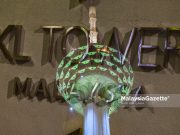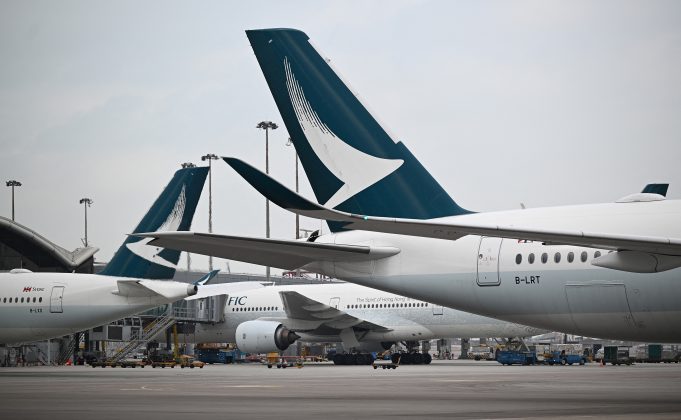However, Rolls-Royce has been hit by an engine defect on an Airbus A350 plane that led to the cancellation of dozens of Cathay Pacific flights this month.
Findings of a Hong Kong probe, published Thursday, found that the defect could have escalated into “extensive damage”.
Responding, Rolls-Royce said it continued “to work closely” with regulators “to support the ongoing investigation”.
Cathay Pacific briefly grounded its fleet of A350s for inspections and repairs after a Zurich-bound plane was forced to turn around and head back to the Chinese city on September 2.
The inspections found that components on 15 of the 48 planes in Cathay’s fleet of A350s, powered by Rolls-Royce engines, had to be replaced.
Rolls-Royce — not to be confused with its former automobile division Rolls-Royce Motors — supplies engines to Airbus and Boeing, the world’s biggest aircraft manufacturers.
Rolls-Royce has been hit by previous engine trouble this century. In 2010, one of its Trent 900 engines used to power an Airbus A380 superjumbo and flown by Qantas Airways, caught fire mid-flight.
The aircraft had to return to Singapore where it landed with significant damage to one wing.
Rolls-Royce took full responsibility for the incident, paying £56 million in compensation to the Australian airline, which had to ground its A380 fleet.
The British company, air-transport regulators and operators with A380s equipped with Trent 900 engines later either removed defective engines or made them compliant.
In 2019, Rolls-Royce encountered durability issues with its Trent 1000 engine when some parts began to wear quicker than expected, which forced the engine-maker to carry out costly repairs.
The fallout hit the group’s 2019 profits by around £1.4 billion, as it paid for custumer disruption and repairs.
Four years ago, Rolls-Royce launched inspections on a “small number” of Trent XWB-84 engines used in Airbus A350 jets after discovering signs of “wear”.
Founded in 1906 by Henry Royce and Charles Rolls, the company first produced renowned automobiles such as the Rolls Royce Silver Ghost, identifiable by a signature bonnet ornament, the Spirit of Ecstasy.
It quickly launched into manufacturing aircraft engines in 1914 to supply the UK during the First World War.
During the Second World War, its Merlin engine equipped the legendary Spitfire, the aircraft symbol of the Battle of Britain in 1940.
Rolls-Royce entered the civil aviation market in 1953, but was nationalised in 1971 after encountering financial difficulties.
The company separated from its auto division two years later, then was privatised again in 1987 under then British prime minister, Margaret Thatcher.
It faced a series of ups and downs in the intervening years, which at points forced it to restructure.
Rolls-Royce employed 41,800 people in 2022 in nearly 50 countries, according to its website.
Shares in the company hit a record high in August. Erginbilgic had decided to axe up to 2,500 jobs worldwide, or about six percent of group staff, after tough times for Rolls that has caused its suspension of dividends since the Covid pandemic.
In the second quarter, the company reported that operating profit almost doubled to more than £1.6 billion. – AFP

















